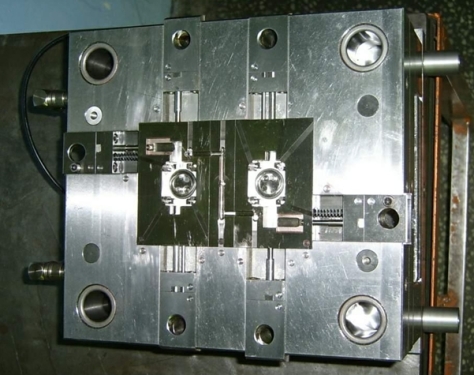 The mold design and manufacturing industry is currently experiencing significant transformation, driven by the need for diverse product varieties, faster updates, and intense market competition. To meet the growing demand for shorter lead times, higher precision, and lower costs, the industry is evolving in several key directions.
Firstly, mold design is moving away from traditional experience-based methods toward more scientific approaches supported by CAD/CAM/CAE technologies. These tools not only enhance the accuracy and efficiency of mold design but also significantly reduce development time and improve overall performance.
Secondly, there is a clear trend towards high-precision molds, with tolerances shrinking from 5 microns to as low as 1 micron. This shift is fueled by the increasing demand for miniaturized components and advanced manufacturing processes that require ultra-fine machining and reduced manual intervention.
Thirdly, multi-functional composite molds are gaining popularity, especially those capable of handling multiple colors and materials in one process. This innovation helps shorten production and assembly cycles, making it ideal for various industries.
Fourthly, hot runner technology is becoming more prevalent in plastic molding due to its ability to boost productivity, improve part quality, and reduce material waste. This technology has already seen widespread adoption in many developed countries.
Fifthly, gas-assisted molding and high-pressure injection techniques are advancing alongside improvements in plastic molding. These methods help achieve better dimensional accuracy, reduce shrinkage, and enhance product quality. Gas-assisted molds, in particular, offer advantages like lower injection pressure and improved structural integrity.
Sixthly, the use of standardized mold components is becoming more common. Standardization not only speeds up the manufacturing cycle but also enhances quality and lowers costs, making it an essential practice in modern mold production.
Seventhly, rapid and economical mold solutions are gaining traction, especially in the context of small-batch, high-variety production. Materials such as epoxy, polyester, and superplastic alloys are being used to create cost-effective molds that maintain high precision and durability.
Eighthly, with the rise of lightweight products in automotive and industrial sectors, die-casting molds are becoming more critical. These molds must now handle greater complexity and longer lifespans.
Ninthly, the increasing use of plastics as substitutes for metal and wood is driving growth in the plastic mold market. As mechanical parts become more complex, the demand for precision plastic molds continues to rise.
Lastly, the technical sophistication of molds is increasing, with a growing share of medium- and high-end molds. This reflects the industry's move toward higher value-added manufacturing.
In conclusion, the future of the mold industry looks promising. For those passionate about this field, staying updated and continuously learning will be key to contributing to its ongoing development. Let’s keep exploring and innovating together.
The mold design and manufacturing industry is currently experiencing significant transformation, driven by the need for diverse product varieties, faster updates, and intense market competition. To meet the growing demand for shorter lead times, higher precision, and lower costs, the industry is evolving in several key directions.
Firstly, mold design is moving away from traditional experience-based methods toward more scientific approaches supported by CAD/CAM/CAE technologies. These tools not only enhance the accuracy and efficiency of mold design but also significantly reduce development time and improve overall performance.
Secondly, there is a clear trend towards high-precision molds, with tolerances shrinking from 5 microns to as low as 1 micron. This shift is fueled by the increasing demand for miniaturized components and advanced manufacturing processes that require ultra-fine machining and reduced manual intervention.
Thirdly, multi-functional composite molds are gaining popularity, especially those capable of handling multiple colors and materials in one process. This innovation helps shorten production and assembly cycles, making it ideal for various industries.
Fourthly, hot runner technology is becoming more prevalent in plastic molding due to its ability to boost productivity, improve part quality, and reduce material waste. This technology has already seen widespread adoption in many developed countries.
Fifthly, gas-assisted molding and high-pressure injection techniques are advancing alongside improvements in plastic molding. These methods help achieve better dimensional accuracy, reduce shrinkage, and enhance product quality. Gas-assisted molds, in particular, offer advantages like lower injection pressure and improved structural integrity.
Sixthly, the use of standardized mold components is becoming more common. Standardization not only speeds up the manufacturing cycle but also enhances quality and lowers costs, making it an essential practice in modern mold production.
Seventhly, rapid and economical mold solutions are gaining traction, especially in the context of small-batch, high-variety production. Materials such as epoxy, polyester, and superplastic alloys are being used to create cost-effective molds that maintain high precision and durability.
Eighthly, with the rise of lightweight products in automotive and industrial sectors, die-casting molds are becoming more critical. These molds must now handle greater complexity and longer lifespans.
Ninthly, the increasing use of plastics as substitutes for metal and wood is driving growth in the plastic mold market. As mechanical parts become more complex, the demand for precision plastic molds continues to rise.
Lastly, the technical sophistication of molds is increasing, with a growing share of medium- and high-end molds. This reflects the industry's move toward higher value-added manufacturing.
In conclusion, the future of the mold industry looks promising. For those passionate about this field, staying updated and continuously learning will be key to contributing to its ongoing development. Let’s keep exploring and innovating together.Clinching Screw,Stainless Steel Screws,Brass Screws,Sheet Metal Screws,Pan Head Screw
Dongguan Tiloo Industrial Co., Ltd , https://www.sales-fastener.com